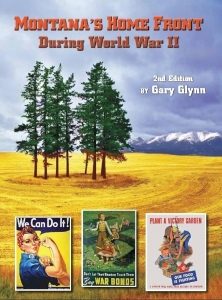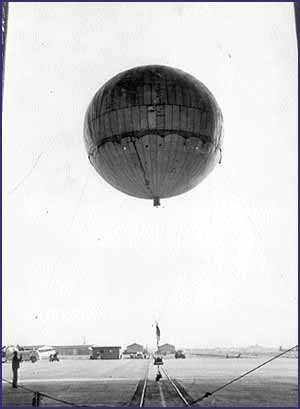News reports this week indicate thatAl Qaeda is now urging its followers to set the forests of western Montana on fire with incendiary bombs, so I thought I would post some information on the last terrorists who tried this tactic. Below is the list I compiled on the Japanese incendiary balloons that landed or were sighted in Montana during World War II. The tactic wasn’t successful for the Japanese, and I don’t expect that Bin Laden’s acolytes will have any more luck, and they just might encounter a rather unpleasant welcome from the residents of western Montana if they try it. Fortunately, their leader is at the bottom of the Indian Ocean and the organization is in shambles. Below is the list of Japanese balloon bombs known to have landed in Montana. More information on the balloon bombs can be found here. You can read the full story of Montana’s Home Front During World War II here.
• Nov. 4, 1944 – A balloon bomb was recovered at sea 175 miles off of Los Angeles.
• Dec. 6, 1944 – A loud explosion was heard in Thermopolis, Wyoming and Japanese bomb fragments were recovered.
• Dec. 11, 1944 – Kalispell. A cream-colored Japanese balloon with blue stripes was found at Truman Creek. Two Japanese men living in Kalispell and Whitefish translated the writing and learned that it was manufactured on Oct. 31, 1944.
• Jan. 16, 1945 – Lame Deer. Balloon recovered.
• Feb. 2, 1945 – Lodge Grass. Balloon recovered.
• Feb. 12, 1945 – Eden. Balloon recovered.
• Feb. 12, 1945 – Red Lodge. Balloon recovered.
• Feb. 12, 1945 – Big Fork. Balloon seen drifting east.
• Feb. 12, 1945 – Riverdale. Three bombs fell southwest of Great Falls and started small grass fires.
• Feb 22, 1945 – Hays. A balloon with three incendiaries and a barometer was found.
• Feb. 25, 1945 – Hardin. Witnesses saw an explosion and smelled explosives. They found a 10-inch long bomb fin sticking out of the ice.
• March 2, 1945 – Boyd. A balloon was recovered, along with a battery, a sandbag, four arming wires, and one bomb.
• March 10, 1945 – Benchland. A balloon made of blue paper was spotted in flight and was recovered mostly intact.
• March 10, 1945 – Whitehall. Balloon with one sandbag and one incendiary found.
• March 13, 1945 – Butte. Balloon found by a farmer.
• March 13, 1945 – Benchland. Balloon recovered.
• March 13, 1945 – Malta. Balloon recovered.
• March 15, 1945 – Stanford. Balloon recovered.
• March 15, 1945 – Legg. Balloon recovered.
• March 18, 1945 – Silesia. Balloon recovered.
• March 19, 1945 – Hammond. Balloon recovered.
• March 20, 1945 – Eden. Balloon recovered.
• March 21, 1945 – Glenn. A 4.5 kg incendiary bomb exploded and started a small fire.
• March 22, 1945 – Sula. An incendiary bomb started a small fire.
• April 4, 1945 – Bozeman. A balloon was recovered at the Montana State College sheep experiment station.
• April 10, 1945 – Turner. Balloon recovered.
• May 3, 1945 – Philipsburg. Balloon with eight sandbags recovered. Five still contained sand.
• May 12, 1945 – Stockett. Balloon recovered.
• May 13, 1945 – Maiden Rock. Balloon recovered.
• May 16, 1945 – Kalispell. Balloon recovered.
• June 1, 1945 – Billings. Balloon recovered south of town. It was believed to have landed two months before.
• July 11, 1945 – Deer Lodge. Balloon recovered.
• July 11, 1945 – Dillon. Balloon recovered.
• July 27, 1945 – Butte. Balloon recovered. It had probably
landed six months earlier.
Balloon bombs were also reported near Cascade, Flathead Lake, Bernice, Hammond, Divide, Harlowton, Coram, Laurel, Nyack, Loring, Dodson, Pryor, Boulder, Monida, Babb,
and Broadus, where an explosion was heard. The Japanese balloon bombs were made of
layers of mulberry paper or rice paper, treated with paraffin.
Read more about Japanese Fugo Balloon Bombs






